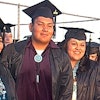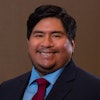OKLAHOMA CITY
Legislation to make English the official language of the state of Oklahoma has run into opposition from American Indians, who say their native tongues are dying fast enough without any help from lawmakers.
As Oklahoma observes its centennial year, the English-only issue bring up divisions that persist more than a century after American Indians were forcibly marched to the region and then endured a series of land grabs.
Many of Oklahoma’s 37 federally recognized tribes are fighting to save their languages and cultures from extinction years after the end of organized efforts to stamp them out.
Critics of the English-only legislation point out that Oklahoma’s very name is formed from two Choctaw Indian words — “okla” and “homma” — that mean “red man.”
“If you go to English only, what are we going to call the state of Oklahoma?” asks Terry Ragan, director of the Choctaw Nation’s language program. “Even town names in the state will have to be named differently.”
Supporters of the legislation say it could end bilingual state government documents, such as driver’s license tests, and force immigrants to learn English and assimilate into American society.
English-only legislation has been adopted in 28 states, and measures are pending in 12 others, says Rob Toonkel, the director of communications for U.S. English, Inc. of Washington, D.C., an interest-group that supports making English the nation’s official language. A similar measure has been filed in Congress.
According to Toonkel, the national English-only movement does not want to deprive American Indians of their native languages but is aimed at standardizing government documents into a single language as a symbol of unity for immigrant populations.
“It’s very much an assimilation issue,” he says. “We should make sure they become part of the country.”
But assimilation is a charged word for many American Indians, whose ancestors were forced from their traditional lands and sent on the Trail of Tears in the 19th century.
English-only restrictions were imposed in Indian Territory to expunge tribal languages and culture, says Kirke Kickingbird, an Oklahoma City attorney and member of the Kiowa tribe.
“That whole era was really about assimilation,” he says.
Chad Smith, principal chief of the 250,000-member Cherokee Nation, the largest American Indian tribe in the United States, says the state’s image is harmed when cultural differences are not embraced
“There’s a message sent to those outside of Oklahoma that we’re intolerant, we’re colloquial and we want to isolate ourselves from the rest of the world,” he says.
“To our tribes, it says that if there’s an official language, your language is secondary and all other languages are secondary,” says Smith, who has also criticized athletic teams using American Indian mascots and names.
Supporters point out that the legislation doesn’t interfere with the teaching or learning of American Indian languages. But critics say a government policy could impede efforts to revive tribal languages.
The Intertribal Wordpath Society, a nonprofit group based in Norman, Okla., estimates that only about 9,000 people are fluent in the Cherokee language and 4,000 in the Choctaw language.
Fewer than a dozen people are fluent in other American Indian languages, including those of the Osage, Pawnee and Chiricahua Apache tribes, according to the group.
“We have absolutely nothing against English. It’s great if people speak English,” says Alice Anderton, a former linguist at the University of Oklahoma and executive director of the Intertribal Wordpath Society. “But it’s great if people speak English plus some other language of heritage.”
—Associated Press
There are currently 0 comments on this story.
Click here to post a comment.
© Copyright 2005 by DiverseEducation.com





















